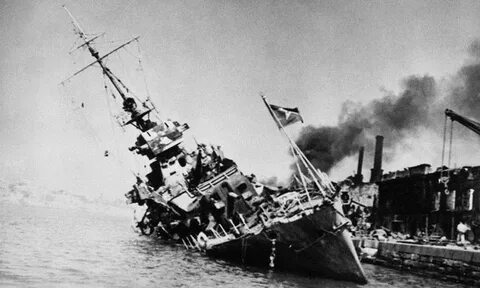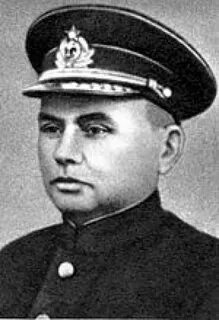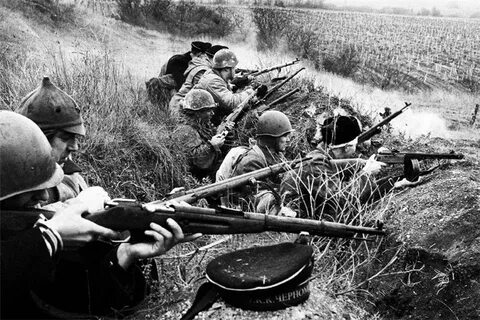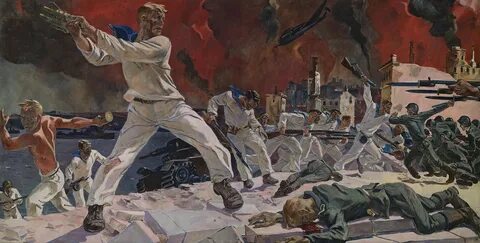THE BATTLE FOR SEVASTOPOL

Just a month after the start of the Great Patriotic War, Soviet pilots were striking oil bases in Romania, and so, on August 13, 1941, Adolf Hitler issued the order to seize the Crimean Peninsula. A large portion of German forces were transferred from Army Group South for this purpose. At that time, the Black Sea Fleet consisted of one battleship, five cruisers, three leaders, 15 destroyers, and 44 submarines. The Soviet fleet felt at ease in the Black Sea. After the surrender of Odessa, civilians, sailors, and Red Army soldiers, along with their weapons, were able to evacuate to Crimea, where they reinforced the Soviet troop group. At that time, Vice Admiral Filipp Oktyabrsky
commanded the peninsula’s defense.

The withdrawal of troops from Odessa was also necessitated by the fact that in September, German troops under Manstein’s command broke into Crimea through Perekop and reached Bakhchisarai within days. But as soon as the Germans halted, they were shelled by 305mm guns from the 30th Battery. These naval guns, housed in a reinforced concrete turret, were buried underground, with their lower tiers extending ten meters below. Their fire was extremely accurate, and the German troops panicked. Soon, the Nazis reached the highway leading to Sevastopol, and the Soviet troops were forced to retreat to Alushta. Only the courage and heroism of the units covering the retreating troops prevented the Nazi invaders from capturing the city outright. Three defensive lines had been established around Sevastopol in September. They were divided into four sectors. At this time, the evacuation of the civilian population began. But during the evacuation, one of the most horrific events of the defense occurred. On November 6, 1941, the steamship Armenia departed the port of Sevastopol, carrying civilians to the Caucasus. On November 7, at 11 a.m., it was attacked by a German torpedo bomber. The ship sank in four minutes. There were approximately 7,000 passengers on board. Only eight survived.
The German command planned the main assault on the city for December 8, but heavy rains hindered preparations for the offensive. Manstein, for his part, planned to strike from the northern part of the city, where the offensive was least expected. The German advance to the Northern Bay meant the cessation of naval supplies.

To assist the city’s defenders, the Soviet command decided to shift the Germans’ attention to another part of the peninsula. It was decided to conduct an amphibious landing near Kerch and Feodosia. The elite 79th Naval Infantry Brigade was among the first echelons. Two rifle divisions were scheduled to land following them. The landing was scheduled for December 19, but on December 17, the Germans launched a second assault on Sevastopol. Their attack came where it was least expected. Consequently, the 79th Brigade hastily embarked, and one of the rifle divisions earmarked for the landing moved to Sevastopol. On December 22, the Black Sea Fleet began shelling the advancing enemy. The Nazis were stopped at anti-aircraft battery number 365, “Fort Stalin,” and fierce fighting raged for several days at this crucial height. Due to the critical situation at the walls of Sevastopol, on December 26, Soviet soldiers landed in some areas near Kerch but were unable to advance further. A small landing force landed near Feodosia, and after a brief battle, they managed to capture and light a lighthouse so that reinforcement ships could land troops. All that was needed was to overcome the boom barriers. A vessel under the command of Lieutenant Gaidai was supposed to blow them up, but the lieutenant lost his nerve and retreated to Novorossiysk, where he was soon executed. Fortunately, the barriers were opened due to German negligence, and paratroopers landed. The Germans were taken aback and, having received the order to retreat, abandoned the Kerch Peninsula. The Soviet command’s expectations were fulfilled, and the Nazi troops abandoned their assault on Sevastopol.

In January 1942, the Germans drove the Red Army out of Feodosia, thereby complicating supply deliveries. A representative from headquarters, Lev Mekhlis, was soon dispatched, who was unfamiliar with command. He immediately clashed with the group’s commander, Kozlov, which greatly affected the army itself.
To secure the Caucasus oil, Hitler demanded the capture of the Kerch Peninsula and Sevastopol. German torpedo bombers also changed tactics. They now attacked in groups, causing heavy losses to transport ships. Manstein was given the 22nd Tank Army and a large air force to destroy the Red Army. The operation to destroy the Soviet group in Crimea was dubbed “Burdard Hunt.” A German pilot who defected to the Soviet side reported that the offensive on the Kerch Peninsula would begin on May 15. At this time, General Kozlov ordered Soviet soldiers to stop digging trenches and begin preparing for the offensive. This proved to be one of their most fatal mistakes. The Germans struck where they were least expected. They landed on boats from Feodosia. The advancing troops were burned with flamethrowers, but when the incendiary mixture ran out, the enemy was able to capture this area. Due to the lack of defenses, Soviet soldiers met the enemy in the bare steppe.

On May 9, 1942, the fresh 22nd Tank Division was committed to battle. It attempted to break through the Soviet defenses to the Sea of Azov. A tank battle erupted near the Syuryuk-Oba mound on the afternoon of May 9. German tanks suffered losses under KV fire. A rapid outflanking of the troops failed. That night, Kozlov and Mekhlis negotiated with Stalin. It was decided to withdraw the forces on the Kerch Peninsula to another defensive line. It was decided to withdraw troops to the Turkish Wall. Stalin no longer believed the front could be held. During the retreat, the German column joined the retreating Soviet tanks and, under cover of clouds of dust, managed to approach the Turkish Wall but failed to hold the enemy. The Red Army began to retreat again.

At Kerch, the Germans were initially held back by tanks, but soon they broke into Kerch and began a retreat to the Taman Peninsula. Soldiers made their way on barges, ships, boats, longboats on car tires, and even by swimming. Many were swept away by the current. The Red Army lost 150,000 men. This operation became one of the most shameful events for the command in the Great Patriotic War. On June 6, 1942, the number of Soviet troops near Sevastopol amounted to approximately 118,900 men, but they were short of ammunition. On June 7, German guns conducted an artillery barrage on Soviet positions prior to the offensive. The Red Army was also shelled by 600mm “Karl” guns and 800mm “Dora” guns. On June 7, German troops lost 2,400 men killed and wounded. The Coastal Army suffered 1,500 casualties. During the first day of the assault, the Germans expended 4,000 tons of ammunition.

On June 9, the 345th Rifle Division was committed to the battle against the Nazis, while the 30th and 35th Batteries continued to fire. On June 13, Manstein captured the 365th Battery. On June 15, the Germans began an assault on the 30th Battery, and on June 17, they were close. A few days later, they were able to enter and capture the surviving artillerymen. By June 20, the Nazis were on the northern side of Sevastopol Bay, and the Red Army soldiers were running low on ammunition. On June 21, Douglas aircraft began picking up the wounded. Thousands of wounded lay at the Khersones airfield. A pilot passed through them and picked out 25 men. The plane could not take more. The fleet was finding it increasingly difficult to supply ammunition. German aircraft sank ships carrying large quantities of ammunition. But the 1st and 2nd defensive sectors still held out. The Germans were unable to take Mount Sapun. A pier was hastily being built near the 35th Battery. If the Germans had stopped, it would have been completed.

On the night of June 29, the Germans crossed Severnaya Bay, occupying its southern part, and now found themselves in the rear of the troops in the 1st and 2nd sectors. That same day, Vice-Admiral Filipp Oktyabrsky flew to the Caucasus, accompanied by representatives of the high command on 12 Douglas aircraft.
That night, two submarines carrying command personnel departed for Novorossiysk, but some commanders heroically decided to remain and die in the besieged city. Now the Red Army soldiers felt abandoned and betrayed. The surviving soldiers gathered at Cape Khersones. Some managed to break through to the partisans, others escaped on rafts. Many died.
The Soviet press announced the surrender of Sevastopol on July 4, but the remaining soldiers continued to fight until the tenth of July.
